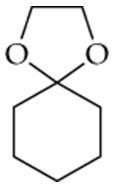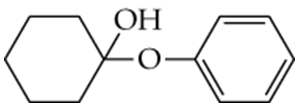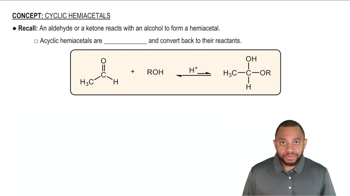Determine whether the following compounds are acetals or ketals. Draw the structure of the aldehyde or ketone it came from.
c.




 Verified step by step guidance
Verified step by step guidance Verified video answer for a similar problem:
Verified video answer for a similar problem:



 1:49m
1:49mMaster Hemiacetals and Acetals Concept 1 with a bite sized video explanation from Jules
Start learning